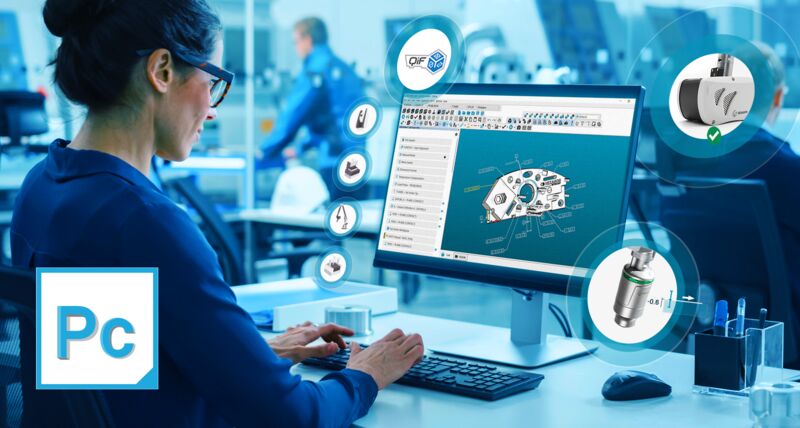PC-DMIS 2022.2
New features to help you work smarter with virtual and physical Hexagon hardware
Contact us

PC-DMIS 2022.2 bridges the gap between virtual environments and physical devices with a new offline configuration designed to optimise programming time and maximise the availability of your metrology hardware. New qualification checks for laser probes and support for multiple sensor types running on a single system will save you time and unlock more value from your Hexagon hardware. It's not just about devices (virtual or real), PC-DMIS 2022.2 now extracts the quality data embedded within the versatile QIF file format to make full use of - and maintain - a continuous flow of PMI data across the business. Alongside an exciting range of new and improved features, our latest version of PC-DMIS helps manufacturers to work more flexibly and efficiently.
New: Simplified offline configuration now works with any device type
A new improved version of PC-DMIS Offline that supports all options and devices in a single configuration – including stationary CMMs, portable arms, laser trackers and vision systems. Programme and simulate measurement routines in a fully realized virtual environment and free up valuable measurement time on physical hardware.
New: QIF file format import
QIF (Quality Information Framework) is an ISO standard CAD neutral file format made for downstream interoperability and traceability through the product lifecycle. PC-DMIS 2022.2 now offers QIF file import so you can take full advantage of CAD, embedded GD&T, characteristic naming and other useful meta-data which can be used downstream for simulation and manufacturing.
New: Avoidance moves in tip vector direction
Requested by customers in our Idea’s Centre, we’ve extending the capabilities of PC-DMIS' Contact Auto Features by enabling avoidance moves to operate in the direction of the tip vector. Previously, avoidance moves were made relative to the workpiece vector, which sometimes made navigation difficult. Now, avoidance moves can be made in the same direction as the tip vector to add a greater range of movement around a complex or restrictive workpiece.
New: Adaptive scanning – copy and paste parameters
This top voted feature from our Ideas Centre allows you to edit and update adaptive scanning routines at speed by duplicating point density, scan speed, acceleration and more. Simply open the Probe Toolbox and add parameters to any single feature and then apply to any number of other features in your programme. A huge time saver which simplifies programme creation, debugging or migrating existing measurement routines for different hardware configurations.
New: Qualification check for laser probes
This new convenient tool determines if a laser probe needs calibration. Previously, operators would always recalibrate laser probes before use – which could take many hours – whether they needed it or not. Now a quick check can identify whether a full re-map is necessary, saving many hours of unnecessary calibration for Indexable and Continuous heads.
New: HP-OW scan offset
PC-DMIS 2022.2 offers extra control over your HP-OW probe for improved measurements of transparent materials. Previously a fixed probe scan could pick up noise from a lower surface. Now, with an added offset value you can raise the probe to ensure only the top surface is scanned. Similarly, you can also drop the probe head to capture both top and bottom surfaces for improved thickness measurements.
PC-DMIS 2022.2 offers other new features and improvements, including:
NEW: Support HP-OW, HP-L-10.10 and HP-C-TS5.10 on single system
- PC-DMIS now supports the use of multiple sensors when available on the same CMM (including Optiv).
- Now you can increase the number and types of parts that a single machine can measure.
- The new multisensor capability offers convenience of fast access to both spot and stripe lasers to offer a wide range of non-contact scanning strategies.
PC-DMIS is a highly flexible and widely adopted metrology software. It comes as standard on all Hexagon’s Manufacturing Intelligence division’s measurement devices. It is also available as a retrofit package for most other measurement equipment manufacturers’ machines, allowing users of non-Hexagon equipment to take advantage of PC-DMIS technology.
To ensure our customers can use the latest features, download the latest updates and continue with maintenance updates, we recommend the purchase of a current Software Maintenance Agreement (SMA). The SMA also provides access to ongoing technical support and service.
-
Technical data
-
Downloads